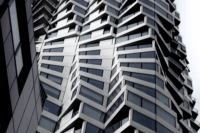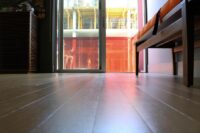- Home
- Articles
- Architectural Portfolio
- Architectral Presentation
- Inspirational Stories
- Architecture News
- Visualization
- BIM Industry
- Facade Design
- Parametric Design
- Career
- Landscape Architecture
- Construction
- Artificial Intelligence
- Sketching
- Design Softwares
- Diagrams
- Writing
- Architectural Tips
- Sustainability
- Courses
- Concept
- Technology
- History & Heritage
- Future of Architecture
- Guides & How-To
- Art & Culture
- Projects
- Interior Design
- Competitions
- Jobs
- Store
- Tools
- More
- Home
- Articles
- Architectural Portfolio
- Architectral Presentation
- Inspirational Stories
- Architecture News
- Visualization
- BIM Industry
- Facade Design
- Parametric Design
- Career
- Landscape Architecture
- Construction
- Artificial Intelligence
- Sketching
- Design Softwares
- Diagrams
- Writing
- Architectural Tips
- Sustainability
- Courses
- Concept
- Technology
- History & Heritage
- Future of Architecture
- Guides & How-To
- Art & Culture
- Projects
- Interior Design
- Competitions
- Jobs
- Store
- Tools
- More
Understanding Architecture Composition: Key Principles for Harmonious Design
Discover the art of architecture composition in this insightful article, which explores how balance, proportion, rhythm, hierarchy, and unity shape harmonious spaces. Learn how architects manipulate form, space, and light to enhance user experience and create functional designs, whether in modern structures or historical landmarks.

Architecture composition is the art of bringing together various elements to create harmonious and functional spaces. It’s more than just aesthetics; it’s about understanding how form, space, and light interact to shape our experiences. As we explore this fascinating topic, we’ll uncover the principles that guide architects in crafting structures that not only stand out but also serve their purpose.
From the balance of proportions to the rhythm of materials, each aspect plays a crucial role in achieving a cohesive design. Whether we’re admiring a modern skyscraper or a historical landmark, the underlying composition speaks volumes about the architect’s vision. Join us as we delve into the essential components of architecture composition and discover how they influence the built environment around us.

Table of Contents
ToggleOverview of Architecture Composition
Architecture composition involves the thoughtful arrangement of various elements to create functional and aesthetic structures. We recognize that this discipline extends beyond mere visual appeal, functioning as a synthesis of form, space, and light to enhance the human experience within built environments.

Key Principles of Architecture Composition
- Balance
Balance addresses the distribution of visual weight within a space. Architects employ symmetrical or asymmetrical arrangements to evoke harmony, ensuring that no single element dominates the overall composition.
- Proportion
Proportion involves the relationship between elements regarding size and scale. Proper proportions create a sense of coherence, whether in individual rooms, facades, or entire buildings.
- Rhythm
Rhythm, akin to musical tempo, governs the repetition of elements. Variations in material, texture, and spacing form visual patterns that guide the eye and create a sense of flow throughout architectural designs.
- Hierarchy
Hierarchy establishes focal points within a composition. By emphasizing specific features through size or position, architects direct attention and signify importance, contributing to the overall narrative of the structure.
- Unity
Unity refers to the cohesive quality of the design. Successful architecture combines various components in a way that feels singular, providing a clear visual and functional intent that resonates throughout the entire project.
Incorporating these principles influences how we design spaces, whether for modern skyscrapers that touch the sky or historical landmarks that withstand the test of time. Each element contributes to a cohesive narrative, reflecting our vision and shaping the built environment.
Key Elements of Architecture Composition
Understanding key elements in architecture composition strengthens our grasp of how structures function and communicate. We explore essential concepts like form and space, as well as scale and proportion.

Form and Space
Form defines the three-dimensional shape of building elements, while space refers to the area surrounding them. We prioritize the relationship between these aspects to create functional environments. Architects manipulate form to influence spatial perception, ensuring spaces feel welcoming or expansive. For instance, open floor plans increase spaciousness, while enclosed areas provide intimacy. Effective use of form and space guides movement, enhances accessibility, and influences light flow, creating a unique atmosphere that aligns with the intended function.
Scale and Proportion
Scale determines the size of a structure relative to its surroundings, while proportion involves the relationship between different elements within the design. Understanding these concepts enables us to create buildings that harmonize with their environment. Buildings that respect their scale integrate better into their context, avoiding the imbalance that oversized structures can cause. Proportional relationships, such as the golden ratio, foster aesthetic appeal, guiding visual harmony. Great examples include the relationship of windows to walls or the interaction between floors and ceilings. These elements enhance overall coherence in design, making spaces more relatable to users.
Principles of Architecture Composition
We focus on essential principles that guide architects in crafting functional and visually appealing spaces. Understanding these principles enhances our ability to create environments that resonate with users.

Balance and Harmony
Balance ensures a fair distribution of visual weight in our designs. We achieve balance through symmetry and asymmetry, creating stability and interest. Symmetrical designs offer order and predictability, while asymmetrical ones introduce dynamic tension and excitement. Harmony ties elements together, fostering a sense of unity. We must consider color, texture, and form, ensuring these facets work collectively to create an integrated experience.
Rhythm and Movement
Rhythm establishes visual patterns through the repetition of shapes, colors, or materials. We utilize rhythm to guide the viewer’s eye throughout the space, enhancing navigation and emphasizing key areas. Consistency in design elements creates a predictable flow, while variations evoke interest and shift focus. Movement within architecture can be represented through changing perspectives, walking paths, and light interplay, influencing how we perceive and interact with the built environment. These elements contribute to a dynamic experience, making our projects more engaging and memorable.
Techniques for Evaluating Architecture Composition
Evaluating architecture composition involves systematic methods to assess design effectiveness. We focus on several techniques to analyze architectural spaces and their elements.

- Visual Assessment
We conduct on-site visual evaluations, examining how structures interact with their surroundings. This assessment considers balance, scale, and proportion, allowing us to identify strengths and weaknesses in design.
- Spatial Analysis
We analyze spatial arrangements, ensuring functionality and flow within the space. This includes examining circulation patterns and how people move through the environment, enhancing user experience and accessibility.
- Light and Shadow Evaluation
We evaluate light and shadow effects, understanding their impact on aesthetics and ambiance. Natural light creates dynamics that change throughout the day, influencing spatial perception and mood.
- Contextual Comparison
We compare architectural designs within their context, examining similarities and differences with neighboring structures. This technique helps us gauge harmony and coherence in style and composition.
- Human Scale Observation
We assess designs from a human scale perspective, focusing on user interaction with elements. This evaluation considers heights, widths, and distances to create environments that feel accessible and welcoming.
- Material and Texture Review
We review materials and textures used in construction, analyzing how they contribute to overall composition. Choices in materials affect visual weight and tactile interactions, influencing the user’s sensory experience.
- Digital Simulation
We utilize digital tools for simulations, enabling us to visualize design concepts before construction. These representations facilitate critical evaluations of proportions, scale, and light interactions.
- Feedback Collection
We gather feedback from users and stakeholders, gaining insights into their experiences and perceptions of the space. This input helps us understand the practical implications of design choices and suggests areas for improvement.
Through these techniques, we develop a comprehensive understanding of architecture composition, allowing us to refine our designs for better functionality and visual impact.
Conclusion
Architecture composition combines essential principles and elements to create harmonious, functional spaces within our built environments. We recognize that balance, proportion, rhythm, hierarchy, and unity significantly influence the aesthetic and experiential qualities of our designs. By understanding these principles, we enhance not only the visual appeal but also the usability of structures.
The interplay of form, space, scale, and proportion enables us to craft environments that resonate with their context. Through conscious manipulation of these elements, we influence spatial perception and movement, fostering cohesive user experiences. Our commitment to balance and harmony—established through symmetry, asymmetry, and careful consideration of color and texture—guides us in creating integrated designs.
Furthermore, we employ various techniques for evaluating architecture composition. Visual assessments, spatial analyses, and light evaluations offer insights into design effectiveness. By observing human scale and assessing materials, we refine our work to enhance functionality and improve user experiences consistently. These techniques empower us to produce high-quality architectural compositions that reflect our vision while meeting user needs effectively.
- and fundamentals of architectural composition
- architectural composition techniques
- architectural design principles
- Architectural Harmony
- architecture aesthetic principles
- architecture and harmony
- Architecture composition
- architecture design concepts
- architecture design key principles
- art of harmonious design
- building design harmony
- Composition in Architecture
- creative architecture composition
- design harmony
- design principles for architects
- elements of harmonious design
- harmonious design
- harmony in architecture
- integrating harmony in architecture
- key principles of architecture
- principles of design in architecture
I create and manage digital content for architecture-focused platforms, specializing in blog writing, short-form video editing, visual content production, and social media coordination. With a strong background in project and team management, I bring structure and creativity to every stage of content production. My skills in marketing, visual design, and strategic planning enable me to deliver impactful, brand-aligned results.
Submit your architectural projects
Follow these steps for submission your project. Submission FormLatest Posts
Top 8 Luxury Vacation Rentals Features Guests Love Most
A luxury vacation rental offers an entirely different experience than a typical...
Why Local Expertise Matters: Choosing the Right Plumbers in Townsville
Why Local Expertise Matters: Choosing the Right Plumbers in Townsville When it...
Bathroom Remodel ROI: How to Add $15–30K to Your Home Value in 2025-2026
Outdated bathrooms can drag a listing 20-30% longer on the market. Buyers...
The Key Factors to Review When Comparing Fiber Providers in Minneapolis
Looking for a fiber provider in Minneapolis can feel surprisingly overwhelming. The...












Leave a comment